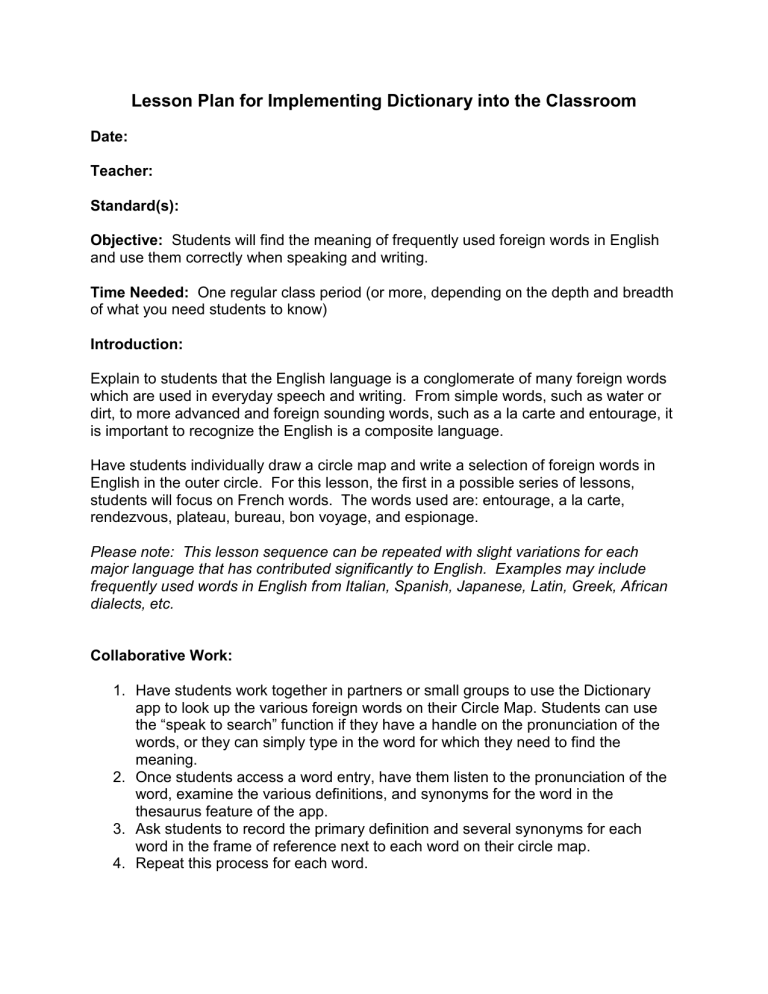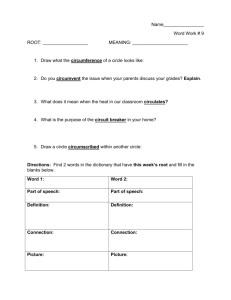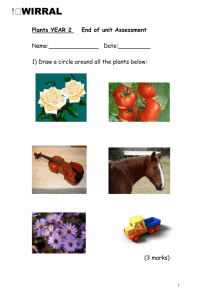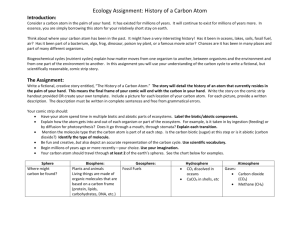Lesson plan for implementing Comic Life into the classroom

Lesson Plan for Implementing Dictionary into the Classroom
Date:
Teacher:
Standard(s):
Objective: Students will find the meaning of frequently used foreign words in English and use them correctly when speaking and writing.
Time Needed: One regular class period (or more, depending on the depth and breadth of what you need students to know)
Introduction:
Explain to students that the English language is a conglomerate of many foreign words which are used in everyday speech and writing. From simple words, such as water or dirt, to more advanced and foreign sounding words, such as a la carte and entourage, it is important to recognize the English is a composite language.
Have students individually draw a circle map and write a selection of foreign words in
English in the outer circle. For this lesson, the first in a possible series of lessons, students will focus on French words. The words used are: entourage, a la carte, rendezvous, plateau, bureau, bon voyage, and espionage.
Please note: This lesson sequence can be repeated with slight variations for each major language that has contributed significantly to English. Examples may include frequently used words in English from Italian, Spanish, Japanese, Latin, Greek, African dialects, etc.
Collaborative Work:
1.
Have students work together in partners or small groups to use the Dictionary app to look up the various foreign words on their Circle Map. Students can use the “speak to search” function if they have a handle on the pronunciation of the words, or they can simply type in the word for which they need to find the meaning.
2.
Once students access a word entry, have them listen to the pronunciation of the word, examine the various definitions, and synonyms for the word in the thesaurus feature of the app.
3.
Ask students to record the primary definition and several synonyms for each word in the frame of reference next to each word on their circle map.
4.
Repeat this process for each word.
5.
Upon finishing this word research, have students practice using the words correctly in conversation. Identify the origin and part of speech of each word with the students, or for more advanced students, have them determine this on their own.
6.
Ask students what the words on their list have in common. The eventual response should be that the words on this Circle Map are all French in origin.
7.
Have students use five of the seven words correctly in writing. You may do this by asking students to write/record a dialogue in the Dragon Dictation app, write and illustrate a comic strip using the Comic Life app, or simply write a postcard
(using a 4x6” note card or a single Keynote slide) as if they have been traveling abroad in France. This will give students a sense of ownership over the words.
Conclusion:
To summarize the lesson, have students share out their projects with another partnerpair or a student from another seating group. You could even set up stations or centers for different words from different cultures and have students take several class periods to rotate through each station.
Extension:
Have students actively use these foreign words in the following weeks by writing a short collaborative dialogue or play that utilizes these words. You could also have students make a video project using iMovie. Give each group a scenario and have them select and use applicable words in an appropriate context/manner. For example: The Opera.
Words that could be useful in this setting include: duo, bravo, diva, impromptu, encore








